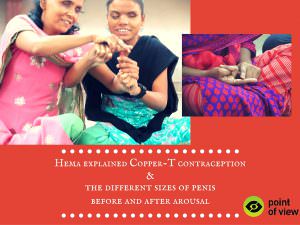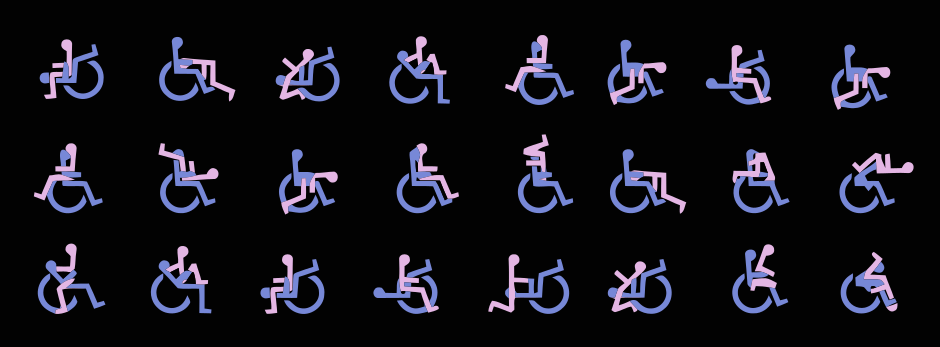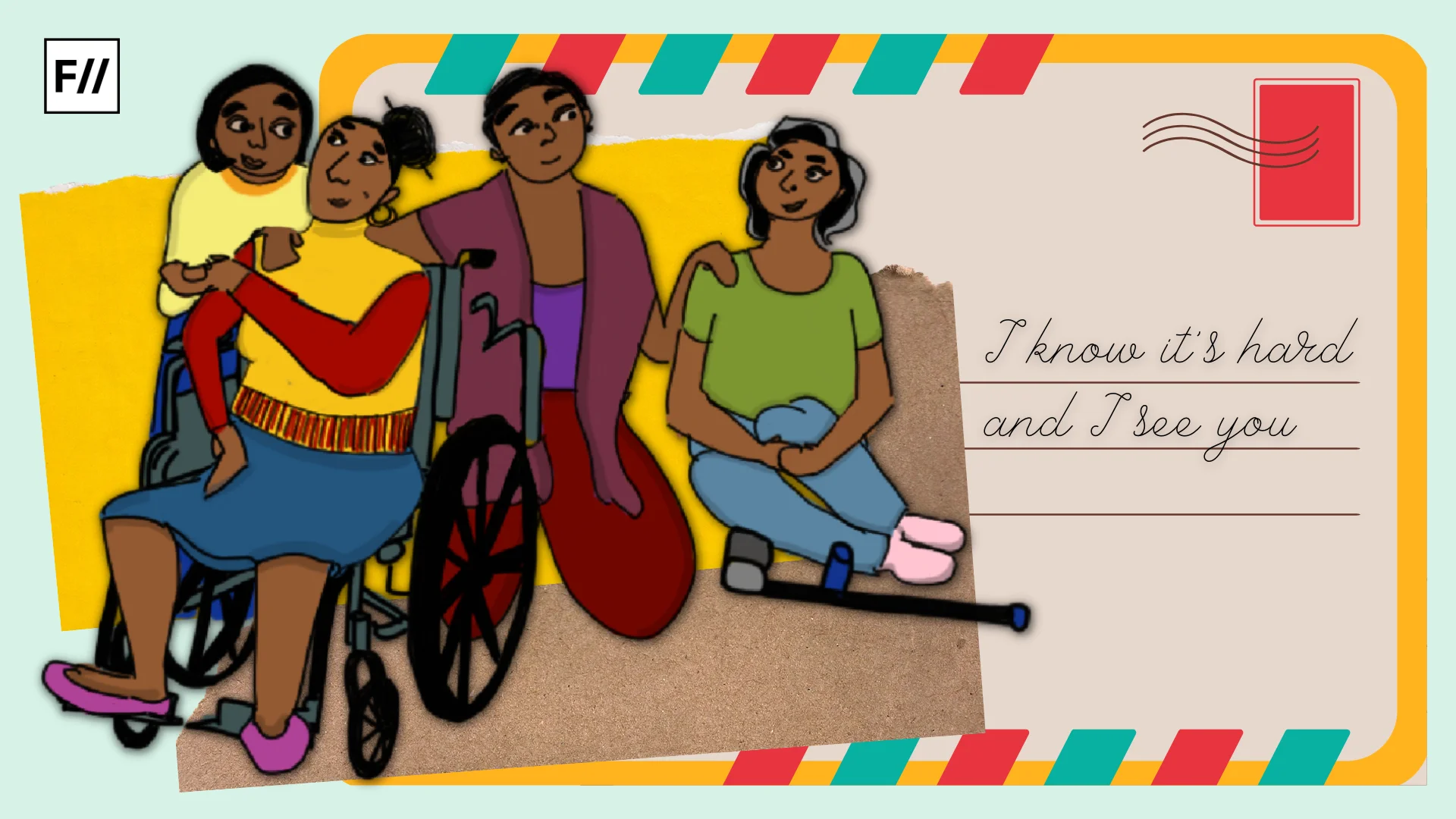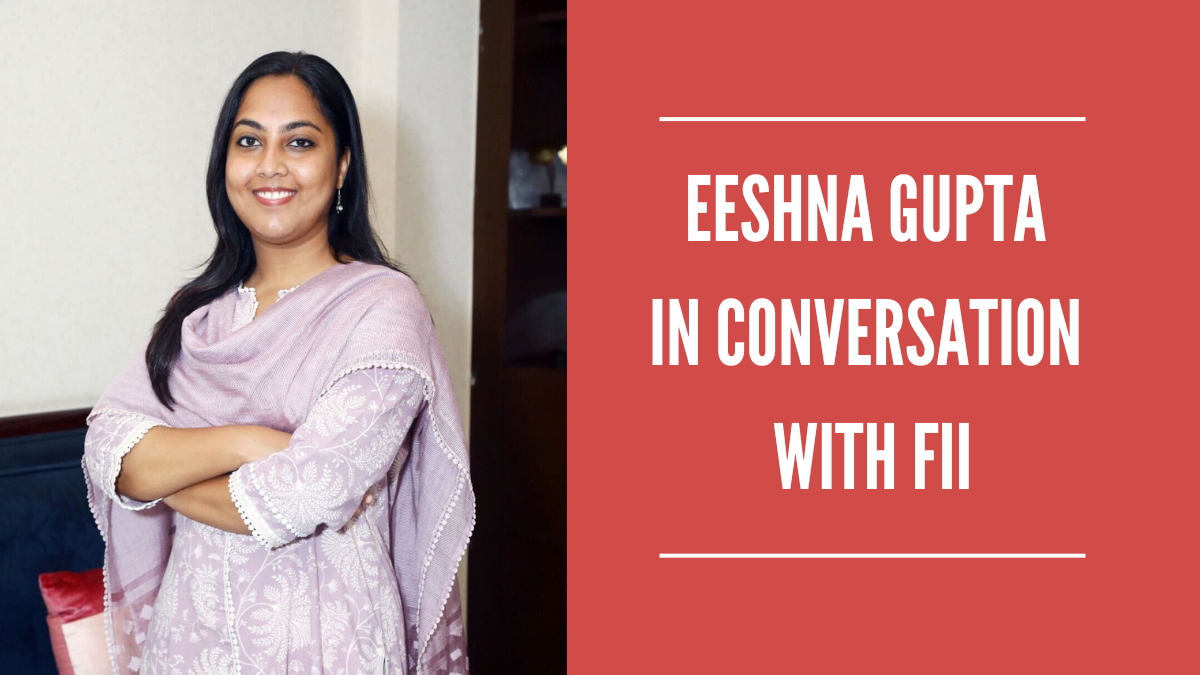Sexuality and Disability is a non-profit initiative started by the NGO Point of View in order to raise awareness and talk about issues of sexuality within the community of people living with disabilities. They conduct workshops for people with disabilities to explore their sexuality, and work to counter the stigma that people with disabilities are not sexual beings.
We chatted with the SexDis team on their work, their successes and their challenges.
FII: Tell us about the beginnings of the SexDis project. Who started it? What was the aim?
SD: Love, sex, romance, intimacy is for everyone, so why should girls and women with disabilities be left behind? With this aim in mind, we launched our website sexualityanddisability.org in 2012. It was pioneering, ground-breaking and the first of its kind. We realised that there was no single resource talking about sexuality and disability, and we wanted to establish that women with disabilities are sexual beings just like anyone else.
The online resource was an accessible platform for women and girls with disabilities as they are often stuck at home due to inaccessible infrastructure, and have very limited social interactions, because of prejudiced mindsets.
That was the first step to opening up discussions around sexuality which was anyway deemed to be taboo in India in general and definitely considered not important in the disability movement.
we want to establish that women with disabilities are sexual beings just like anyone else.
We wanted to take these discussions ahead. We wanted to move beyond the online space, interact with girls and women in person and broach this sensitive issue. So we launched the program ‘Sexuality and Disability’ in 2015 and through our accessible sexuality and disability workshops we have reached four states, 7 cities/towns and around 800 persons with disabilities.
While our work on the ground is on, we also amplify voices of girls and women with disabilities through our blog.sexualityanddisability.org. We have had the first ever narrative by a visually impaired Indian woman talking about surviving domestic violence, and powerful personal narratives of disabled women on dating, sexual abuse, living with chronic illness and so on.
https://www.youtube.com/watch?v=x4GEEgFYzIs
FII: Why is it important to talk about the sexuality of people with disabilities in an affirming and empowered manner?
SD: People with disabilities are either considered to be depressed/’abnormal’ individuals or super achievers and superheroes. The crux of all the labels is that they are not “normal” not “like everyone else”. The environment they navigate is also inaccessible, unaccepting, and prejudiced.
In such a scenario, they are forced to choose what they can ask for. They are forced to prioritise their needs. So yes, a person with a disability needs education, employment, and food – why would they think about sexuality? This is the dominant question. If at all the sexuality of persons with disabilities is discussed, given attention, considered an issue is only in the case of violence and abuse. This is a further attempt to protect persons with disabilities, to infantilise them, and to control them.
Therefore, at our program the attempt is to go beyond the “basic needs” and to recognise sexuality as an issue and a need and definitely in a much more positive and empowering manner than only in the context of violence. Our idea is that being sexual is a part of being human and by denying persons with disabilities their right to be a sexual being if they choose to be, we are denying their right to be a full human.
FII: What are the questions you frequently field with regards to sexuality and disability?
SD: We still field questions and comments around sexuality and disability on “What do you mean by sexuality?” “Why do you want to talk about only sex with persons with disabilities?” and “It is okay to talk about menstruation, hygiene body but not anything more.”
People with disabilities are either considered to be depressed/’abnormal’ or super achievers and superheroes.
FII: What are the kinds of resources you have built for people with disabilities vis a vis sexuality on your website?
SD: The biggest resource for us on our website is accessible information. In India information is still not available on sexuality and disability, let alone it being in an accessible format. We have ensured that the content and the form of information is easy to read and comprehend.
And the wealth of personal narratives on our blog is really a tool which empowers women with disabilities to stand up for their rights, to reflect on the stigma surrounding them and to continue their struggles knowing that there are many women in a similar situation, with similar dilemmas, and are yet conquering them.
FII: I have seen that you have done several workshops to impart sexuality education to people with disabilities. What are the activities that you do in these workshops? What experiences have stood out?
SD: We conduct workshops with girls and women with disabilities and men and boys with disabilities where needed. These workshops on sexuality and disability are along the lines of our website, talking about sexuality and disability. We take the participants through the sessions on body literacy, reproductive process, sexuality and myths, relationships and intimacy, violence and abuse. The details and content of the workshops vary on the group and the duration of the workshops.

These workshops are made accessible for example using more sign language videos and images for hearing and speech impaired participants, using tactile body models for visually impaired participants.
These workshops prove over and over again the dearth of information around sexuality with women who are disabled. The primary reasons could be the assumption of asexuality that is often attached to disabled women and the idea that all people with disabilities are childlike so don’t need any information associated with growing up or being adults.
The biggest resource on our website is accessible information.
But what we learnt was heartening. Women with disabilities, albeit shy in the beginning, were really excited to talk about sexuality and intimacy. Be it a woman from rural India or a young woman living in a city, the excitement was unmarred, and the concerns were similar. Would someone accept them, could they be desirable, did they really have a choice?
The most difficult part of the workshops was dealing with the stigma that the women had internalised and the way that had affected their partner choices. In most workshops when women were asked what kind of partner would they want, the answers and responses would start with disabled or nondisabled and seldom about who they liked, what they liked about them. For us, the achievement was to shift the lens even if a little and to encourage the women to tap within and talk about their dreams, desires and needs.
FII: Your #MyAccess walks studies the accessibility in public spaces for people with disabilities. What are the observations you made on these walks?
SD: #MyAccess is a campaign to understand the linkages between safety and accessibility and is organised annually during the sixteen days of ending gender-based violence and the International Day of Persons with Disabilities.

Here we bring disabled and nondisabled girls/women together to understand what access to public spaces would mean to them. It has been a fantastic experience where first the girls/women establish a link of being a woman with each other. There were experiences that all women irrespective of their disability shared. For example, all women felt safe if they had their cell phones on them, they felt unsafe on isolated roads, and it didn’t matter if they were disabled or not.
The other aspect this campaign brings out is the linkage between accessibility and safety. Where non-disabled women felt unsafe in some situations, inaccessibility of roads, footpaths, traffic lights and infrastructure made women with visual, hearing and locomotor impairment feel very unsafe. A hearing impaired girl shared that she was injured when she couldn’t hear a horn on a narrow street, a visually girl shared that she was groped at the traffic signal while taking assistance and crossing the street.
FII: How do use digital media to further the discourse on sexuality and disability? How have you made your digital content accessible?
SD: Digital media has been our ally in starting the discourse on sexuality and disability in 2012 and now in furthering our work. Our website was designed and written in a manner which would be accessible to all girls and women across disabilities. We followed the Web Content Accessibility Guidelines with a developer who specialises on web accessibility. Digital media has really been the tool that helped us start discussions on such a sensitive issue.
Going forward from the website, we launched our blog from the ground up in 2015. Today, our blog is a digital space that amplifies the voices of girls and women with disabilities. It helps us eliminate the invisibility around disabled women, and fight the silence that hushes their voices. It works both to empower them and also to bring out their issues that don’t get as much attention as they deserve.
Women with disabilities, albeit shy in the beginning, are really excited to talk about sexuality and intimacy.
We work on altering the ethos of the woman with a disability – who is at the center of our work – through our social media dissemination and engagement. We also live-tweet our workshops to bring out issues around sexuality and disability in the mainstream.
FII: What are SexDis’ plans for the future? In what ways can the conversations you have started be expanded further by allies?
SD: SexDis plans to further amplify voices of girls and women with disabilities through online platforms, while empowering them in their personal spaces through workshops. We would like to expand our work more and more on influencing the people around the woman with a disability – parents, family, men with disabilities and so on.
Our focus going forward will also be to work a lot more with disability rights organisations/ institutions and supporting them to recognise and understand that sexual rights are important for persons with disabilities.
We would like to create more linkages with women’s rights movement, gender rights spaces, and sexual rights spaces to become more inclusive of women with disabilities and our collaborations with the Mumbai Pride and One Billion Rising are already positive steps in this direction.
You can follow SexDis on their website, Facebook, Twitter and Instagram.
Featured Image Credit – SexDis
About the author(s)
Asmita is a Freelance Communications Consultant, and specialises in leading digital advocacy campaigns for social and gender justice issues. When not using social media for work, she uses social media for fun (and a healthy dash of existential despair).




